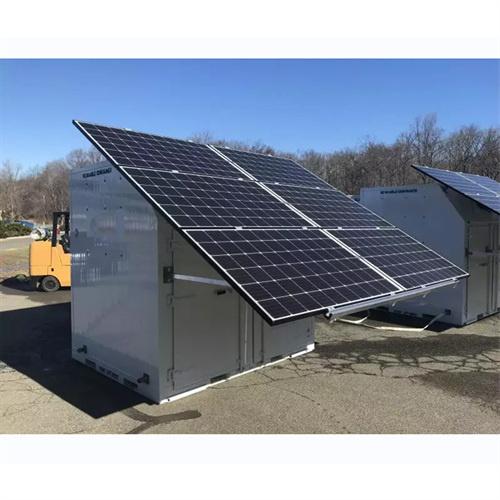About Ha air conditioning energy storage
Figure 5 illustrates the distribution of the temperature and melting fraction of PCMs (with and without hybrid nano) for both configurations at different running times and inflow air temperatures. Figure 5a shows th.
The time variation of the PCMs charging process (melting) is given in Fig. 6 for both configurations at t.
As previously stated, lowering the air temperature near the condenser of an AC unit increases the unit's overall performance. The EAT from the air-PCM heat exchanger i.
The COP of an AC system is a crucial determinant of its effectiveness. It can be obtained from Eq. 13. Figure 8 illustrates the percentage gain with time in COP of the enhanced AC uni.
It is essential to determine how much electricity this AC storage energy solution saves over a regular AC unit. Based on the COP, both improved and regular units' power consumpti.
Recharging the PCM (solidification) is necessary since the PCM dissipates all its cold energy into the air throughout the daytime. The low night temperatures allow for this solidificati.
As the photovoltaic (PV) industry continues to evolve, advancements in Ha air conditioning energy storage have become critical to optimizing the utilization of renewable energy sources. From innovative battery technologies to intelligent energy management systems, these solutions are transforming the way we store and distribute solar-generated electricity.
When you're looking for the latest and most efficient Ha air conditioning energy storage for your PV project, our website offers a comprehensive selection of cutting-edge products designed to meet your specific requirements. Whether you're a renewable energy developer, utility company, or commercial enterprise looking to reduce your carbon footprint, we have the solutions to help you harness the full potential of solar energy.
By interacting with our online customer service, you'll gain a deep understanding of the various Ha air conditioning energy storage featured in our extensive catalog, such as high-efficiency storage batteries and intelligent energy management systems, and how they work together to provide a stable and reliable power supply for your PV projects.
Related Contents
- Energy storage air conditioning development
- Energy storage air conditioning system air flow
- Energy storage air conditioning structure
- Container energy storage system air conditioning
- Air conditioning heat pump energy storage
- Water system air conditioning energy storage tank
- Energy storage unit air conditioning
- Air conditioning energy storage power generation
- The role of energy storage air conditioning
- Water energy storage air conditioning
- Energy storage hot and cold air conditioning
- Yishun air conditioning energy storage


